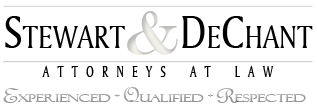III. What do you do when you decide to review the case
A. Privity of contract required (this area is being fully covered by Andy Dorman).
1. Bohan v. Jackson, 188 Ohio App.3d 446, 2010-Ohio-3422, 935 N.E.2d 900 (8th Dist.). An intended beneficiary of a Will that was requested by the decedent, but not written by the attorney was found not to be in privity with the attorney and the case was dismissed.
2. Simon v. Zipperstein, 32 Ohio St.3d 74, 512 N.E.2d 636 (1987), found an exception to the need for privity if there were attorney bad acts and/or fraud.
B. Statute of Limitations.
2305.11(A) “An action for malpractice other than an action upon a medical, dental, optometric of chiropractic claim…shall be commenced within one year after the cause of action accrued.”
Zimmie v. Calfee, Halter and Griswold, 43 Ohio St.3d 54, 538 N.E.2d 398 (1989), the period begins to run upon a) negligence; b) the termination of the attorney-client relationship or c) discovery of the alleged malpractice whichever occurs later.
Inquiries on b) and c):
1. When should the client have known that he or she may have an injury caused by his or her attorney? Is this is a standard subject to a wide range of arguments? Is it a difficult standard to predict? (See below.)
2. When did the attorney-client relationship terminate? It is always going to be after the date of negligence in a) above.
The later of these three/two dates is used. When the action accrues is a question of law to be determined by the court.
Whitaker v. Kear, 123 Ohio App.3d 413, 704 N.E.2d 317 (4th Dist. 1997).
STATUTE OF LIMITATIONS
Gullate v. Rion, 145 Ohio App.3d 620, 763 N.E.2d 1215 (2d Dist. 2000).
3. Cognizable event
The statute of limitations begins to run when there is a cognizable event whereby the client discovers or should have discovered that his injury was related to his attorney’s act or non-act and the client is put on notice of the need to pursue each possible remedy against the attorney.
Cognizable act is objective. Spencer v. McGill, 87 Ohio App.3d 267, 622 N.E.2d 7 (8th Dist. 1993). The objective standard is an event that is sufficient to alert a reasonable person as his attorney has committed an improper act in the course of legal representation.
FDIC v. Alexander, 78 F.3d 1103 (6th Cir. 1996), states Ohio law does not require actual notice that a legal wrong was done. Rather constructive knowledge of facts rather than actual knowledge of their legal significance.
4. Definition of the last date of representation.
The date the client lost confidence in his attorney. That is the definition in the case law.
5. Practical considerations.
a. Case law indicates that you must sue each individual attorney. The firm does not practice law.
b. John Doe Defendants are no longer effective to extend the statute of limitations. Hence, all of the attorneys have to be named.
c. Do you have an attorney fee claim? Fox & Assoc. Co. v. Purdon, 44 Ohio St.3d 69, 541 N.E.2d 448 (1989). “When an attorney is discharged by a client with or without cause, and whether the contract between the attorney and the client is express or implied, the attorney is entitled to recover the reasonable value of the services rendered the client prior to discharge on the basis of quantum meruit. Fox is the law, not hourly contracts, not contingency contracts, quantum meruit.
d. Fee contract.
1) Are you going to be defending a fees claim?
2) How do you charge if your claim is both on offense and a defense that has to be offset?
PROFESSIONAL JUDGMENT
Not adopted in Ohio….but Ohio case law regarding bad judgment calls vs breach of standard of care.
Koslen v. Chattman, Gaines & Stern, 8th Dist. No. 78781 (Sept. 6, 2001).
Benna v. Slavin, 8th Dist. No. 78063 (Dec. 18, 2000).
DePugh v. Sladoje, 111 Ohio App.3d 675, 676 N.E.2d 1231 (2d Dist. 1996).
Hahn v. Jennings, 10th Dist. No. 04AP-24, 2004-Ohio-4789.






